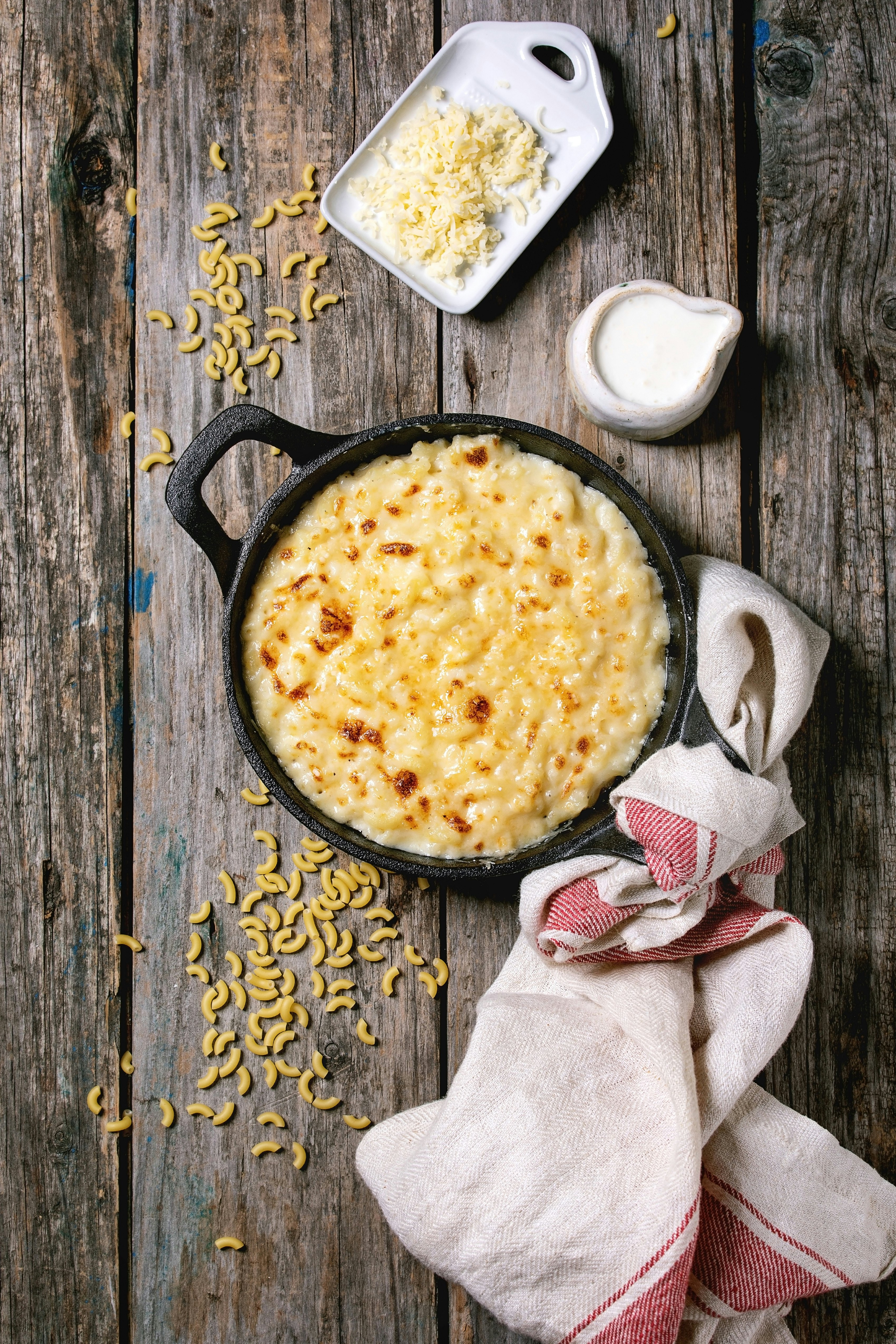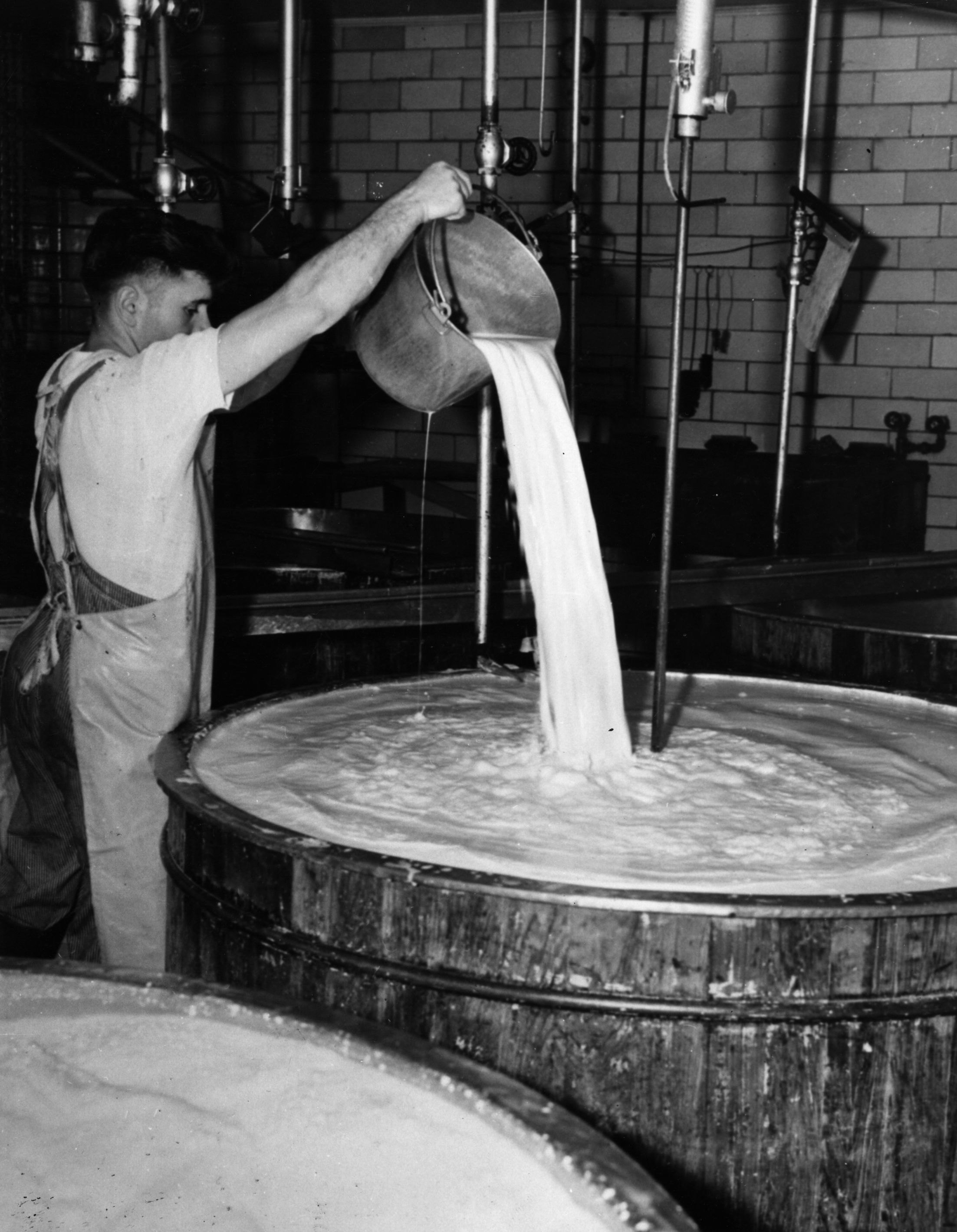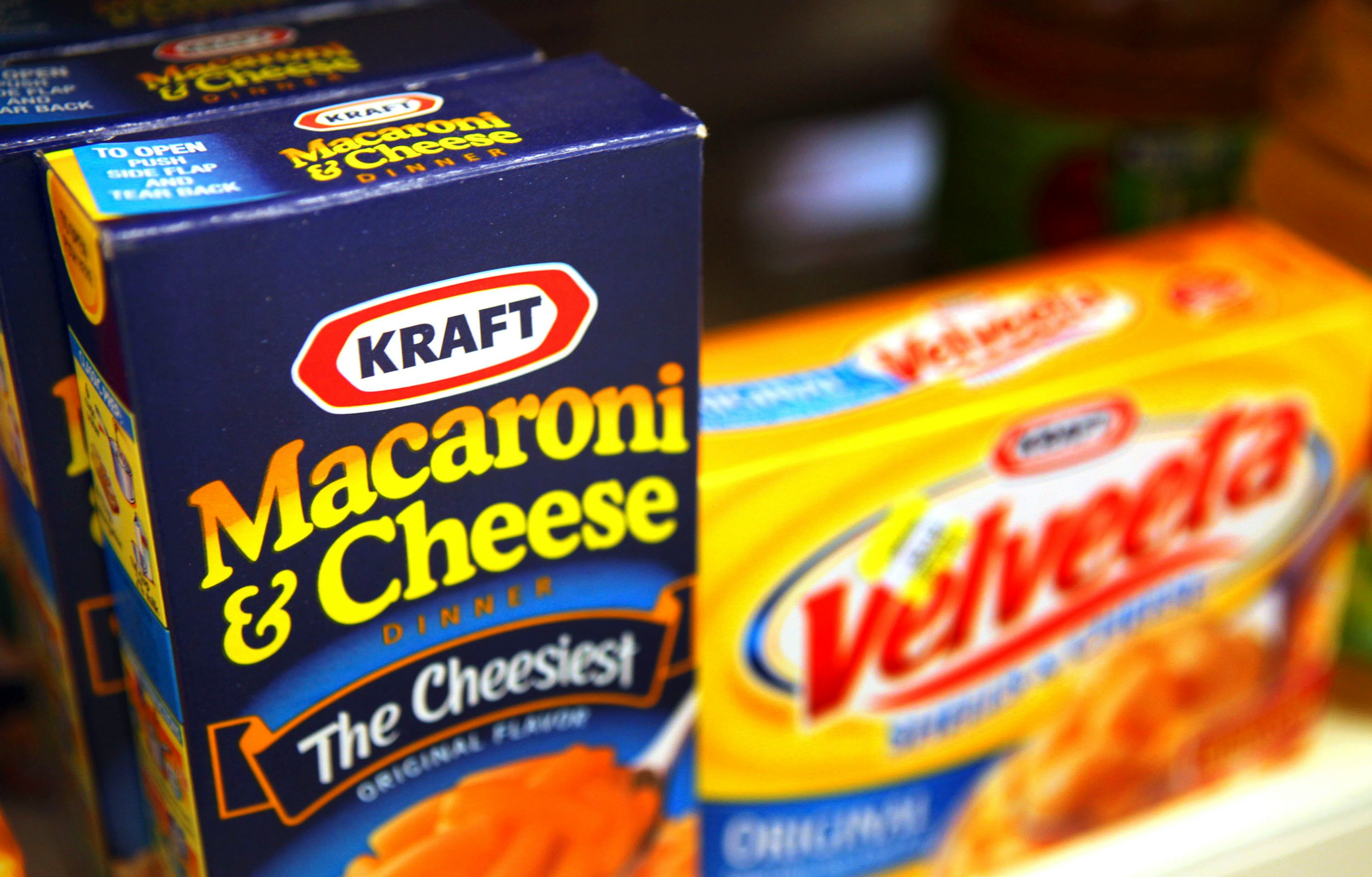
Brie may rule yuletide charcuterie boards, but if you’re craving some luscious, gooey mac ‘n cheese, processed dairy products take the cake. Velveeta, in particular, rises above the competition when it comes to creating the ideal creamy, delicate mouthfeel quintessential to mac ‘n cheese. During the holidays, the savory cheese relative is even mixed with sugar and butter and turned into festive fudge (yes, seriously), but it shines brightest in a glorious vat of noodles.
The electric orange, foil-wrapped loaf falls into the vast category of processed cheese products. The term processed cheese first came about around the time of World War I, when it was sold in a can. In the decades that followed, processed cheese took on many forms, from American cheese slices to a powdered product packaged with microwaveable pasta, and became an American staple that persists today.
Lloyd Metzger, vice president of quality and technology at Valley Queen Cheese in Milbank, South Dakota, says processed cheese is as American as apple pie.
“The flavor profile has just kind of become part of America,” Metzger tells Inverse.
Velveeta is the perfect example of what processed cheese products can do that natural cheese can’t: melt into a uniform, velvety-smooth — hence the name — viscous liquid. The product is nothing short of a culinary marvel steeped in science. But how did it come to be? Here’s the backstory of how one simple ingredient created a beloved product that’s synonymous with our favorite cheesy dishes.
Waste Not

Some processed cheese products on the market today, including Velveeta, don’t contain any cheese, but their predecessors did.
Food scientists began messing with the composition of cheese over a century ago when refrigeration was scarce and packaging couldn’t keep food fresh in the way it can today. Back then, wheels of cheese were aged in room-temperature warehouses, but they didn’t all turn out right. Fuzzy molds that weren’t meant to be there sometimes covered the surfaces of cheddar or Swiss. Others were free of mold but had too strong of a taste.
Mold could safely be scraped off and the remaining product was completely fine, but it couldn’t be sold to customers in this state. Same with cheese that didn’t age well. It was perfectly safe to eat, but consumers wouldn’t go for the strong taste. That’s where cheese processing comes in.
“Processed cheese was really an attempt to reuse otherwise unusable cheese,” John Lucey, director of the Center for Dairy Research at the University of Wisconsin-Madison, tells Inverse.
An Emollient Dream

To make use of otherwise discarded product, cheesemakers – including J.L. Kraft himself, who patented the recipe for American cheese, another beloved processed cheese product – began combining all of these cast-aside cheeses with other ingredients. Sometimes that was other, nicer cheeses, but it was also the addition of a mineral called sodium citrate that really changed the game.
Sodium citrate is an emulsifying salt. It turns proteins into binding agents that love interacting with both water and fat, which is why processed cheeses melt so beautifully.
When you melt a block of regular old cheddar, the cheese’s oils separate from its proteins, and again from its water. It becomes “a big pool of mess,” as Lucey describes it.
This isn’t so with processed cheeses, and that’s largely thanks to these emulsifying salts. In the first step of the process, the salt breaks apart the cases around protein molecules, making the once fiercely independent amino acids both soluble (meaning it can be dissolved in water) and able to bind to fats.
Once the protein cases are busted, food scientists add heat to the mixture, which includes the raw components of cheese including milk and enzymes –– and the special emulsifying salts. The components are aggressively stirred in a giant vat, much like whipped cream. This process is called shearing.
“You’re forcing the protein and fat to interact,” Metzger explains.
As it churns, the fat molecules break into smaller pieces, and the emulsified proteins are forced to interact with these tiny globs of fat. The more they interact, the more these modified proteins absorb the oil that would otherwise form a pool of fat when melted. The water inside the cheese also now binds to the emulsified proteins, which have been rendered soluble.
“You change the molecule to interact with fat, so you don’t get pools of oil, and then you have it interact with water, and that’s how you get that smooth, creamy, runny, appearance without the clumpiness of regular cheese,” says Metzger, who is also a former professor in the department of dairy and food science at South Dakota State University.
All the while, the mixture is heated. When processed cheese was first invented, heating was important because it killed any potential contaminants that could be lingering in the misfit cheese. It also extends shelf life by killing bacteria and pasteurizing the end product. Heating is why you can keep a loaf of unchilled Velveeta in your cupboard.
But Is It Cheese?

The Food and Drug Administration (FDA) has many different classifications for these cheese-type products. They depend on cheese and moisture content, and how the product was created.
Today, some cheese products are still made from cheese, but it isn’t a salvage job anymore. Entire industries have sprung up around producing cheese specifically for pasteurized cheese products. But Velveeta is in another league entirely.
When it first came onto the scene in the 1950s, Velveeta was a cheese spread. Today, by FDA standards, Velveeta is a “pasteurized prepared cheese product.”
It actually isn’t technically cheese at all. It's a homogenous clump of skim milk, canola oil, salt, whey protein, processed carbohydrates, and, of course, sodium citrate, that together make for an even melt –– your iconic Thanksgiving macaroni and cheese.
“It was always this very meltable, gooey product that hasn’t changed dramatically,” Lucey says. “Velveeta has been Velveeta for a long time.”










